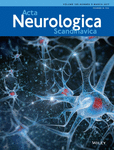Drug taper during long-term video-EEG monitoring: efficiency and safety
Abstract
Objectives
Anti-epileptic drugs (AED) are often tapered to reduce the time needed to record a sufficient number of seizure during long-term video-EEG monitoring (LTM). Fast AED reduction is considered less safe, but few studies have examined this. Our goal is to examine whether the rate of AED reduction affects efficiency and safety.
Materials & methods
We performed a retrospective observational study of patients referred for presurgical evaluation. Each patient was categorized by two dichotomous parameters of AED tapering: (i) fast vs slow AED reduction the first 24 h of LTM and (ii) complete vs partial AED discontinuation during LTM.
Results
Of 79 patients, 51% underwent a fast AED reduction and 58% ended up with AEDs completely discontinued. Complete AED discontinuation was associated with three times increased likelihood of receiving rescue therapy during LTM and double risk of having secondary generalized tonic–clonic seizures (sGTCS) compared to the group partially discontinued. Fast vs slow AED reduction had no effect on the safety of LTM. The fast AED reduction group and the complete AED discontinuation group had a significantly longer time to first seizure and total recording time compared to the slow AED reduction and partial discontinuation groups, respectively.
Conclusions
Fast AED reduction was found safe in patients undergoing presurgical video-EEG monitoring. Patients completely discontinued from AEDs had more sGTCS than patients partially discontinued. Further studies are suggested to confirm this finding and to evaluate whether fast reduction is safe and efficient in other subgroups of patients referred for LTM.




